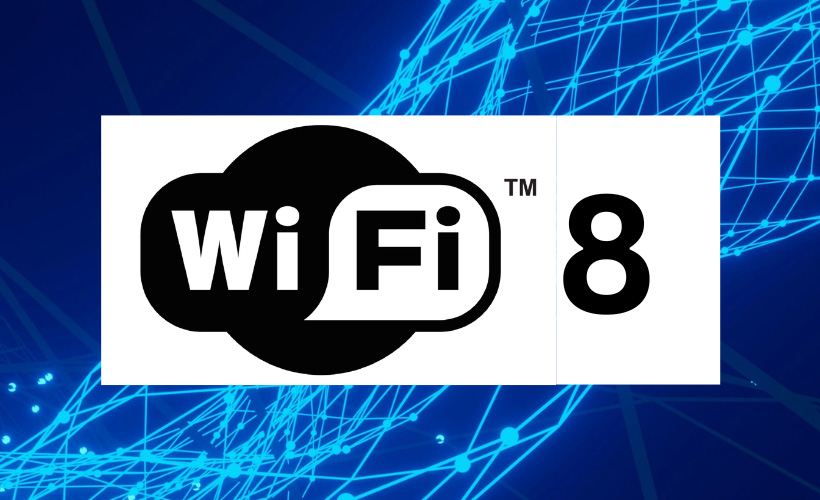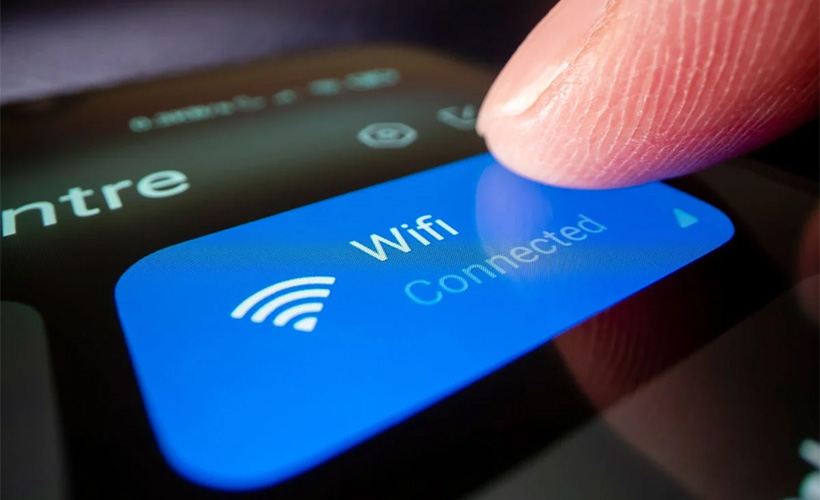
Wi-Fi 8 Is In Preparation: what Should We Expect?
With the next version, Wi-Fi is revising its priorities. Instead of focusing on maximum speed, Wi-Fi 8 should offer better reliability, thanks to new features that optimize the network.
A technology centered on reliability
Each new version of Wi-Fi brings significant improvements. However, developers of this standard generally focus more on Wi-Fi’s peak speed than on other performance indicators. But, according to MediaTek, things will be different with Wi-Fi 8 since, this time, this technology should mainly improve network reliability, not maximum speed.
“Wi-Fi 8 prioritizes connection reliability rather than increasing the speed of main lines, in order to use the same tri-band spectrum (2.4 GHz, 5 GHz, 6 GHz) more efficiently,” MediaTek states in a blog post. To achieve this, Wi-Fi 8 should have new features that optimize data transmission. For example, MediaTek mentions a feature called Multi-AP Coordination that allows multiple Wi-Fi access points to coordinate to reduce interference. Another feature called Optimized Spectrum Utilization is supposed to improve the reliability of a Wi-Fi network when multiple devices are in use.
Thus, according to the company, Wi-Fi 8 should improve Wi-Fi performance by 25% through interference reduction. Moreover, this new standard should improve speed by 80% during peak hours.

Wi-Fi 8 should improve Wi-Fi performance by 25% through interference reduction. Moreover, this new standard should improve speed by 80% during peak hours.
Still a long way to go
But as mentioned above, Wi-Fi 8 still has a long way to go before becoming an official standard. Furthermore, it’s important to emphasize that for now, this is still only MediaTek’s point of view, one of the industry players. The official characteristics will only be known when the Wi-Fi 8 standard is finalized by the Wi-Fi Alliance.
While Wi-Fi 7 is only in its early stages, Wi-Fi 8 is already being prepared. And according to MediaTek’s white paper, it should mainly improve network reliability, not maximum speed. The company mentions new features that limit interference or improve speed during peak hours.
Differences Between Wi-Fi 7 and Wi-Fi 8
Wi-Fi 7 and Wi-Fi 8 are two upcoming wireless standards with several key differences:
- Launch date: Wi-Fi 8 is projected for 2028.
- Maximum data rate: Wi-Fi 7 can achieve up to 46 Gbps, whereas Wi-Fi 8 aims for speeds up to 100 Gbps.
- Frequency bands: Wi-Fi 7 operates on 1 to 7.25 GHz (including 2.4, 5, and 6 GHz bands), while Wi-Fi 8 will add millimeter-wave bands to the existing 2.4, 5, and 6 GHz bands.
- Modulation: Wi-Fi 7 uses 4096 QAM with OFDMA, but Wi-Fi 8 will employ 8192 QAM OFDMA, allowing for higher data density.
- Advanced features: Wi-Fi 7 introduces Multi-RU, while Wi-Fi 8 will implement Distributed MLO (Multi-Link Operation) and Multi-AP coordination.
- Channel size: Wi-Fi 7 supports up to 320 MHz channels, while Wi-Fi 8 may support 320 MHz or larger channel sizes.
- Focus: Wi-Fi 7 emphasizes increased speed and reduced latency, whereas Wi-Fi 8 aims to improve reliability, manageability, and throughput.
Both standards aim to enhance data rates, efficiency, and reliability in Wi-Fi networks, with Wi-Fi 8 building upon and further improving the advancements made in Wi-Fi 7.

Both standards aim to enhance data rates, efficiency, and reliability in Wi-Fi networks, with Wi-Fi 8 building upon and further improving the advancements made in Wi-Fi 7.
How Does Wi-Fi 8 Improve Connectivity
Wi-Fi 8 (802.11bn) focuses on improving reliability in WLAN connectivity through several key features and technologies:
- Coordinated Spatial Reuse (Co-SR): This feature allows access points to dynamically adjust their power output based on the proximity of devices and other access points. It can boost overall system throughput by 15% to 25% by reducing interference and congestion.
- Coordinated Beamforming (Co-BF): This technology enables multiple access points to work together to direct signals more efficiently toward active devices, minimizing interference with other devices.
- Dynamic Sub-Channel Operation (DSO): This feature optimizes transmission efficiency and increases data throughput.
- Enhanced Modulation Coding Scheme (MCS): Wi-Fi 8 introduces additional levels in the MCS lookup table, allowing for smoother transitions in connection quality. This can reduce sudden drops in data rates, enhancing overall transmission stability and improving bandwidth by 5% to 30%.
- Multi-AP Coordination: This feature optimizes the sharing of resources between multiple access points in mesh networks, improving overall network performance.
- Coordinated Target Wait Time (TWT): This allows low-power IoT devices to negotiate specific transmission times with access points, reducing power consumption and decreasing contention with non-latency-sensitive traffic.
By implementing these features, Wi-Fi 8 aims to provide more stable connections, reduce dropped connections, and improve response times, especially in crowded networks and areas with high device density12. The focus on reliability over raw speed is expected to enhance the overall user experience in WLAN connectivity.
Links
- Meet Wi-Fi 8, which trades speed for a more reliable experience – PCWorld
- Sell your pre-owned Wi-Fi device online – iGotOffer
What Will WI-FI 8 Be? [Video]
Video uploaded by Giovanni Geraci on January 14, 2024.






Facebook
Twitter
RSS